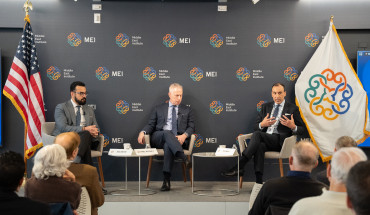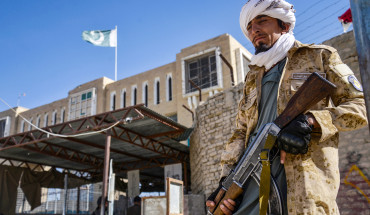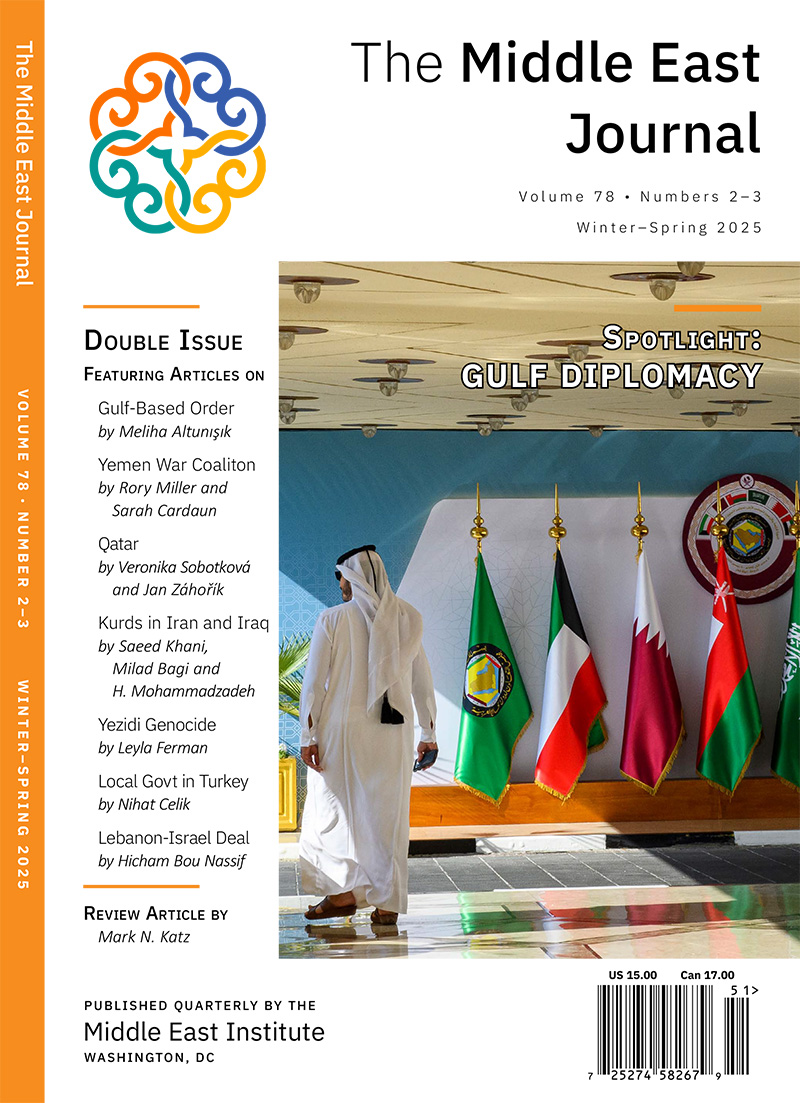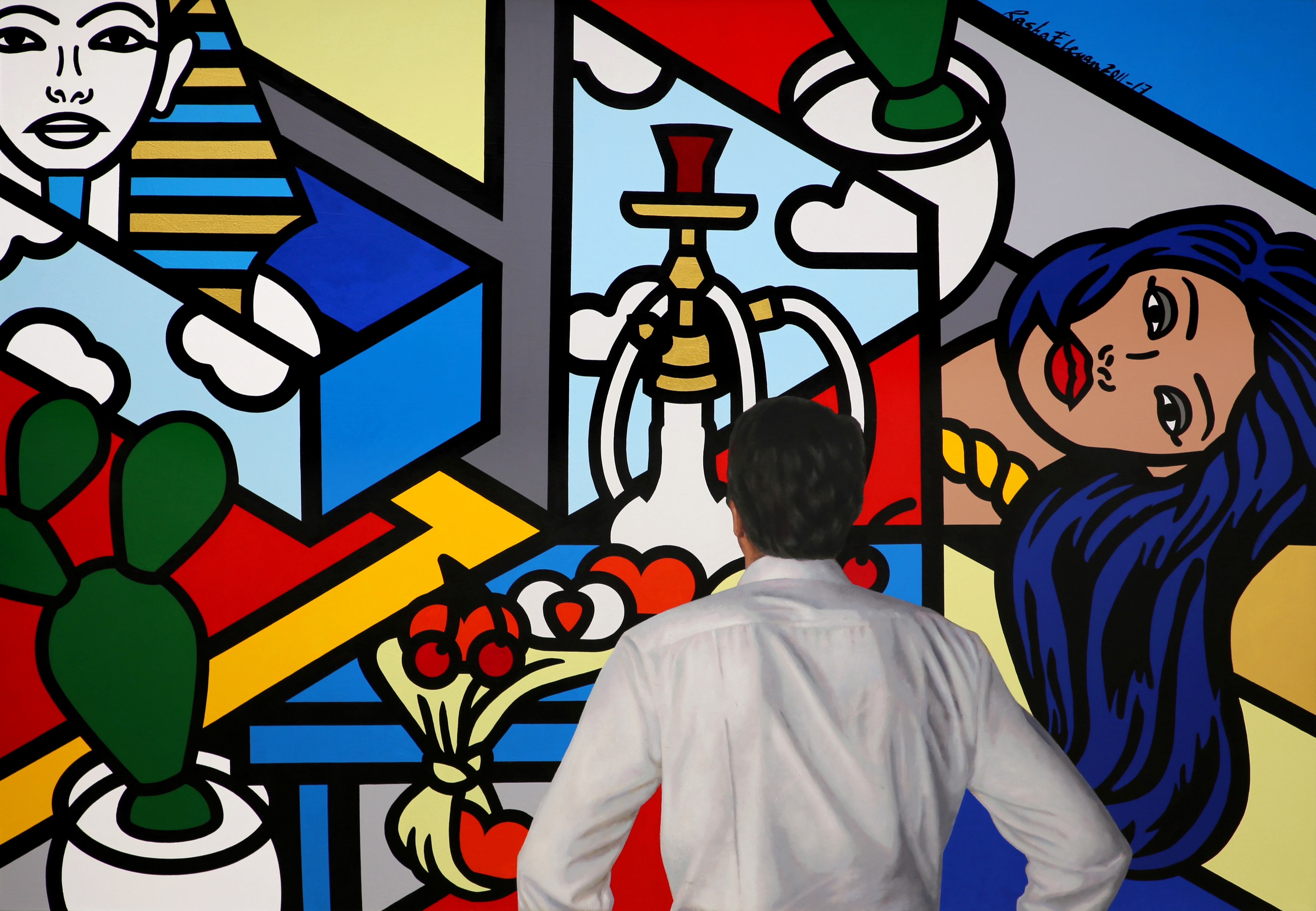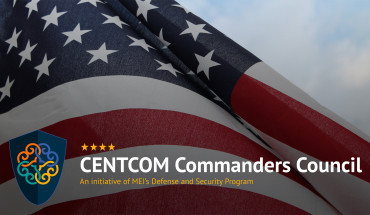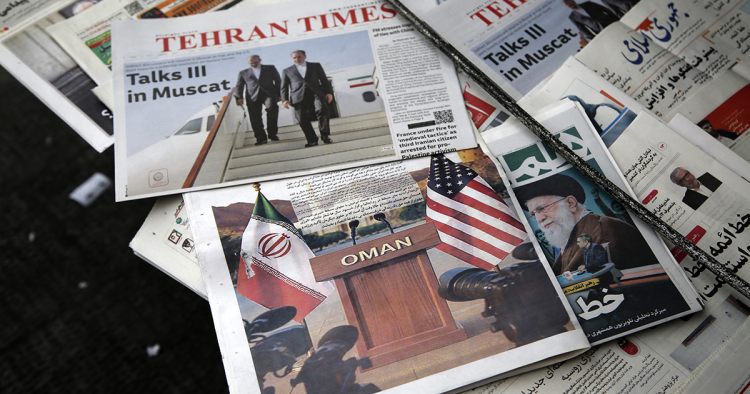This article is an expanded version of a piece to be published by Gulan Media.
Iran appears to be reorienting its approach to diplomatic engagement with its neighbors and the West by prioritizing the economic benefits of cooperation. While Iran’s overtures to the US, Saudi Arabia, Russia, and China bear watching, they may signify pragmatic moves in the expectation of short-term benefit rather than deeper ideological changes in posture. Domestic political and economic pressures are more likely to force Iran to reassess its confrontational approach to relations with neighbors and global powers. A possible withdrawal of support for the Houthis is the latest significant potential outcome of Iran’s shifting stance. The following are five factors to watch for as a Tehran under duress reformulates its policies.
1. Pragmatic economic diplomacy: Iran’s shift toward US engagement?
Iran’s current foreign policy under new leadership appears focused on pragmatic economic engagement, particularly with the United States, as a means of easing regional tensions. An op-ed by Foreign Minister Abbas Araghchi in The Washington Post on April 8 highlighted Tehran’s shift toward appealing directly to President Donald Trump’s business instincts, framing Iran as an “open market” for US investment if sanctions are lifted.
This suggests a tactical pivot toward economic diplomacy, prioritizing immediate gains over ideological posturing. Tehran is downplaying past hostilities, including the assassination of Islamic Revolutionary Guard Corps (IRGC) Quds Force head Qassem Soleimani by the US in 2020, and emphasizing future cooperation, signaling readiness for a “strategic pause” rather than confrontation.
The welcoming of businessman Steve Witkoff as US negotiator further underscores Iran’s intent to reframe relations through commerce, not conflict. Domestically, this approach is pitched as a “new chapter,” with calls for all factions to back the effort to attract US business. However, there is some internal dissent from the hardliners — although they are too small of a minority to be able to derail the ongoing diplomatic process. While the leadership in Tehran projects openness abroad, repression at home continues, casting doubt on the depth of Iran’s commitment to genuine reform. Nevertheless, the foreign policy priority seems clear: secure economic relief through engagement, especially with the US, while containing internal unrest.
2. Iran-Saudi rapprochement: Risk management over regional stability
The 2023 China-brokered rapprochement between Iran and Saudi Arabia represents a tactical move toward de-escalation, but long-term Gulf stability remains uncertain. Saudi Arabia’s recent outreach, including the visit by Defense Minister Khalid bin Salman to Tehran in April 2025, reflects Riyadh’s desire to hedge against potential fallout from an Iran-US conflict. By engaging directly with Iran’s military leadership, notably the IRGC, the Saudis seek assurances and influence over Tehran’s regional posture, which they believe is shaped more by military actors than diplomats.
This approach suggests a pragmatic Saudi strategy aimed at avoiding entanglement in regional wars, rather than a lasting realignment. While some in Tehran suspect US coordination behind the scenes, reviving the “Twin Pillars” strategy of shared regional control by Iran and Saudi Arabia, this view likely overstates the coherence of Washington’s current strategic objectives.
Realistically, Saudi Arabia is leveraging improved ties with Iran to counterbalance pressures from both the US and Israel, especially on normalization with Jerusalem. Although Iran-Saudi relations are at a two-decade high, this détente is more a means of mutual risk management than a foundation for enduring stability. Structural rivalries and external pressures remain, making sustained peace fragile and contingent on broader regional developments.
3. Strategic eastward tilt: Limits of Iran’s ties with Russia and China
Iran’s growing ties with Russia and China are reshaping its foreign policy primarily as a strategy to counter US sanctions, but significant limitations remain. Iran seeks to leverage partnerships within frameworks like the 10-country BRICS organization initiated by Russia and the China-dominated Shanghai Cooperation Organization (SCO) to resist US pressure, and a free trade agreement with Russia is expected to boost bilateral trade.
However, much of the recent growth in Iran-Russia trade has been driven by external events, like Russia’s February 2022 full-scale invasion of Ukraine and the subsequent sanctions imposed by the West, rather than deep strategic alignment. On regional issues, Iran and Russia lack full convergence, particularly on Israel and Syria’s post-Assad political future. Tehran is skeptical of Moscow’s commitment to shared goals, and there is often little coordinated action between them in conflict zones like the South Caucasus.
While Supreme Leader Ali Khamenei remains invested in long-term ties with Russian President Vladimir Putin, Iran’s reliance on Russia is more tactical than strategic. Iran uses these partnerships to maintain leverage while engaging in cautious dialogue with the US. Still, distrust of Russia lingers in both Iranian and Western circles. Ultimately, Iran’s tilt eastward reflects necessity, not a profound shift, and its strategic posture remains fluid, shaped by changing global and regional dynamics.
4. Domestic pressures driving foreign policy realignment
Iran’s domestic political unrest and economic struggles have significantly influenced its foreign policy, pushing Tehran toward a more pragmatic and less ideologically rigid stance. Faced with public dissatisfaction over economic mismanagement and international isolation, Iran’s leadership is reassessing its confrontational policies. A key driver of this shift is the stark contrast with Gulf Arab states, particularly Saudi Arabia, which have pivoted from religiously driven policies to trade-focused, globally integrated strategies. These states, by aligning with global powers and prioritizing economic diplomacy, have outpaced Iran in regional influence.
Iranian commentators increasingly argue that Tehran’s adherence to ideological posturing has left it isolated, while Arab rivals thrive as economic hubs. The pressure from domestic protests and economic hardship is fostering a growing consensus that Iran must abandon simplistic East-West divisions and instead adopt flexible, trade-oriented diplomacy.
Saudi Arabia’s transformation is especially influential in shaping this debate, showing Iran that survival in a globalized world demands adaptability, not ideological rigidity. Iran’s engagement with the Trump administration reflects this internal shift — seeking economic relief and global reintegration to stabilize its domestic situation. The hope is that pragmatism, not slogans, will restore Iran’s regional and international standing.
5. Proxy warfare under strain: A tactical rebalancing
Iran’s regional strategy of supporting proxy groups like Hezbollah, Hamas, and the Houthis faces growing sustainability challenges due to shifting dynamics and heightened US pressure. Recent reports suggest that Tehran is reconsidering its support for the Houthis, with claims of Iranian troop withdrawals from Yemen to avoid direct confrontation with the US. This recalibration reflects Tehran’s urgent need to prioritize its own security amid intensified US airstrikes and a growing American military presence in the Red Sea and the Indian Ocean.
Iran's message to the Houthis and Iraqi militias to exercise restraint indicates a strategic pivot. Rather than escalating through proxies, Tehran appears focused on managing tensions and avoiding giving Trump a pretext for direct strikes. The Houthis, now re-designated as a terrorist organization by Washington, have also reportedly reduced activity, signaling Iran’s desire to ease international pressure and possibly present itself as a mediator.
Moreover, Iran is aware of the growing involvement of external powers like Russia and China in proxy dynamics, complicating its influence. Accusations that Russia provides intelligence and arms to the Houthis highlight how these groups no longer act solely under Iranian direction, making Tehran’s control tenuous.
This shift does not necessarily signal a full abandonment of proxy warfare but shows a pragmatic rebalancing. Iran seeks to avoid costly escalations while preserving its regional influence. Its proxy strategy, once central, now competes with a more cautious, survival-focused approach in the face of US threats and regional recalibrations. Thus, Iran’s support for destabilizing actors is becoming more selective and tactical rather than a blanket commitment, reflecting the growing questions over the strategy’s sustainability.
Iran’s foreign policy at a crossroads: Challenges and opportunities
Over the next five years, Iran’s foreign policy will face two interconnected challenges: surviving economic stagnation and rolling back the dominance of hardline ideologues. Critics within Iran argue that hardline foreign policy analysts, lacking global experience and nuanced understanding, have steered the country into strategic isolation. Their reliance on religious rhetoric and anti-Western slogans has alienated Iran from the international system, especially as Persian Gulf rivals like Saudi Arabia surge ahead through pragmatic, trade-focused diplomacy.
Economically, Iran is grappling with its weakest position since the Iran-Iraq war, assailed by failing financial systems, environmental crises, and pervasive public mistrust. This severely limits Tehran’s capacity to leverage foreign policy for economic recovery. Without reform, the regime lacks the social capital and public confidence to undertake large-scale economic projects, while entrenched interest groups resist changes that could benefit the broader population.
Yet, there are opportunities. Engagement with the US over a potential nuclear deal could offer sanctions relief and open avenues for economic growth if pragmatists regain influence. Recognizing that Iran’s economic woes are tied to its confrontational foreign policy, moderates are pushing for a shift toward diplomacy and global integration. Ultimately, Iran’s greatest opportunity lies in abandoning ideological rigidity and embracing economic pragmatism, but this depends on overcoming entrenched hardline dominance.
Alex Vatanka is a Senior Fellow at the Middle East Institute.
Photo by Fatemeh Bahrami/Anadolu via Getty Images
The Middle East Institute (MEI) is an independent, non-partisan, non-for-profit, educational organization. It does not engage in advocacy and its scholars’ opinions are their own. MEI welcomes financial donations, but retains sole editorial control over its work and its publications reflect only the authors’ views. For a listing of MEI donors, please click here.






